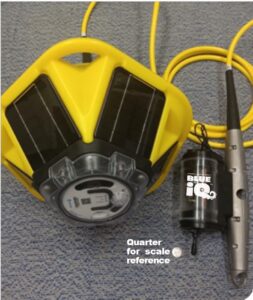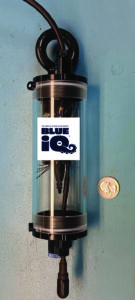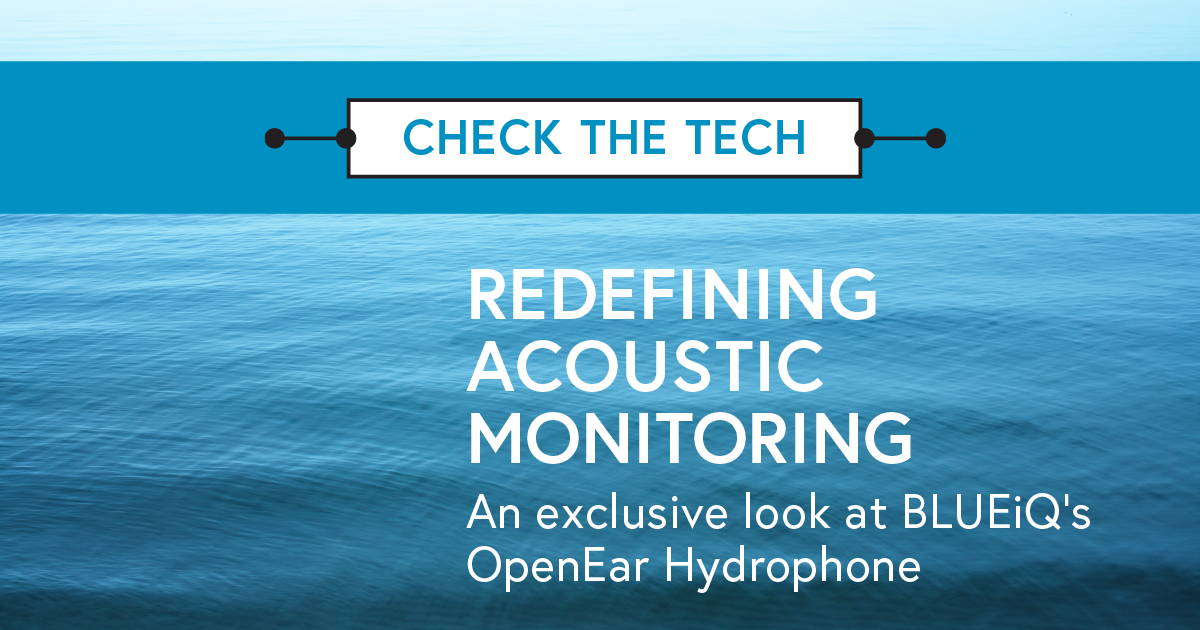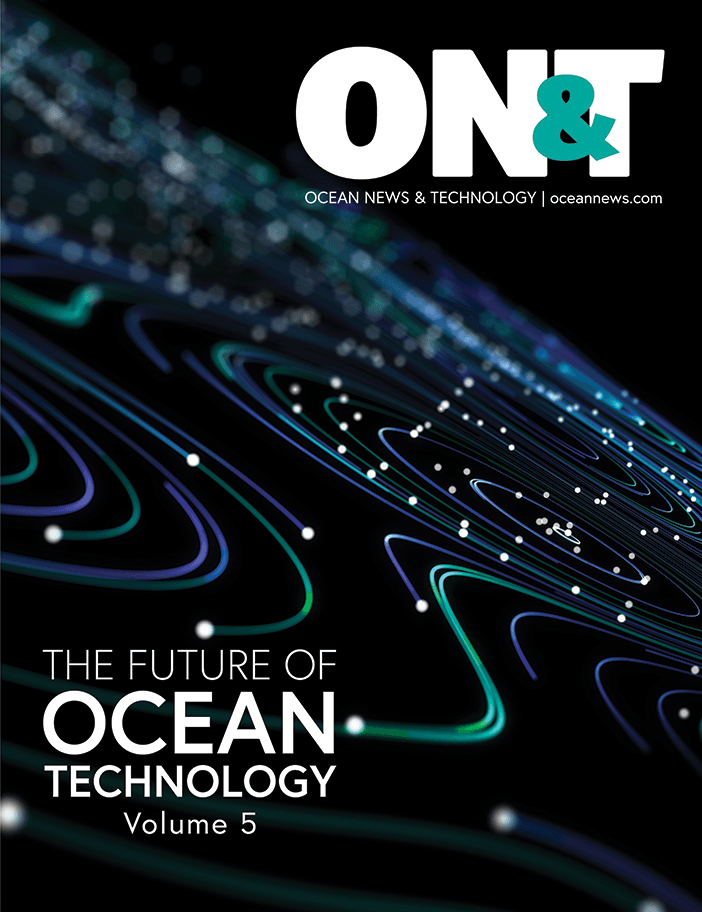BLUEiQ unveiled its software-defined hydrophone, OpenEar, at the 2023 OCEANS Gulf Coast Conference in Biloxi, Mississippi. This unique hydrophone is not just another piece of technology; it’s a low-cost, lightweight, and ML-enabled software-defined solution that integrates seamlessly with industry standards, such as Sofar’s Spotter buoy and Smart Mooring, using the Bristlemouth open standard.
SAFEGUARDING THE NARW
Aligned with the urgent need to address the alarming decline of the NARW population, OpenEar can be used as a solution for protecting and enhancing the conservation of NARWs. NARWs face multiple threats, including ship collisions, communication disruption due to human-generated ocean noise, and changes in their food sources caused by climate change. As highlighted in NOAA’s recent testimony, the lack of existing technology to track and monitor vessel strikes emphasizes the critical need for innovative and efficient solutions.

The deployment of PAM technology is pivotal in preventing negative impacts on NARW populations. OpenEar can be used as a tool to mitigate threats to NARWs, including ship collisions, communication disruption due to human-generated ocean noise, and changes in their food sources caused by climate change. The OpenEar hydrophone provides real-time alerts that help prevent ship strikes and protect whale migration patterns, contributing significantly to ongoing conservation efforts.
REWRITING PAM PRACTICES
BLUEiQ aims to disrupt PAM practices by developing open, customizable, and impact-driven sensing technologies for biodiversity protection and port and harbor safety. The goal is to drive down costs and make these crucial tools more accessible, ensuring effective solutions to pressing ocean sustainability challenges. BLUEiQ is set to offer an open software integration kit for quick and efficient integration.
BLUEiQ is actively preparing for upcoming pilots to deploy their smart OpenEar hydrophones for real-time NARW detection and localization along the US Eastern Seabed and Marine Sanctuaries. These pilot tests will play a crucial role in validating the effectiveness of OpenEar.
COLLABORATIVE STARTUP
BLUEiQ’s business model involves a powerful collaboration with industry leaders and esteemed academic institutions. As a premier startup alumni of various prestigious accelerator programs, including the Gulf of Maine Research Institute (GMRI), CleanTech Open, MassChallenge, BLUEiQ leverages these connections to advance its mission. The startup won a prestigious award from Mass Clean Energy Center, is also a 2024 member of The BLUE Incubator and Greentown Labs in Boston, MA, and the USM Research Foundation 2024 Gulf Blue Navigator program in Gulfport, MS.

Talking exclusively to ON&T, Founder and CEO Kim Gavin of BLUEiQ remarked: “BLUEiQ is spearheading a visionary mission to provide vital information that empowers federal regulators to make informed decisions without unduly burdening key industries in Massachusetts, Rhode Island, and Maine. Addressing critical issues such as NOAA’s proposed vessel speed restrictions and the lack of real-time monitoring technology, BLUEiQ’s commitment is to create a comprehensive and reliable NARW dataset.”
This story was originally featured in ON&T Magazine’s Jan/Feb 2024 issue. Click here to read more

